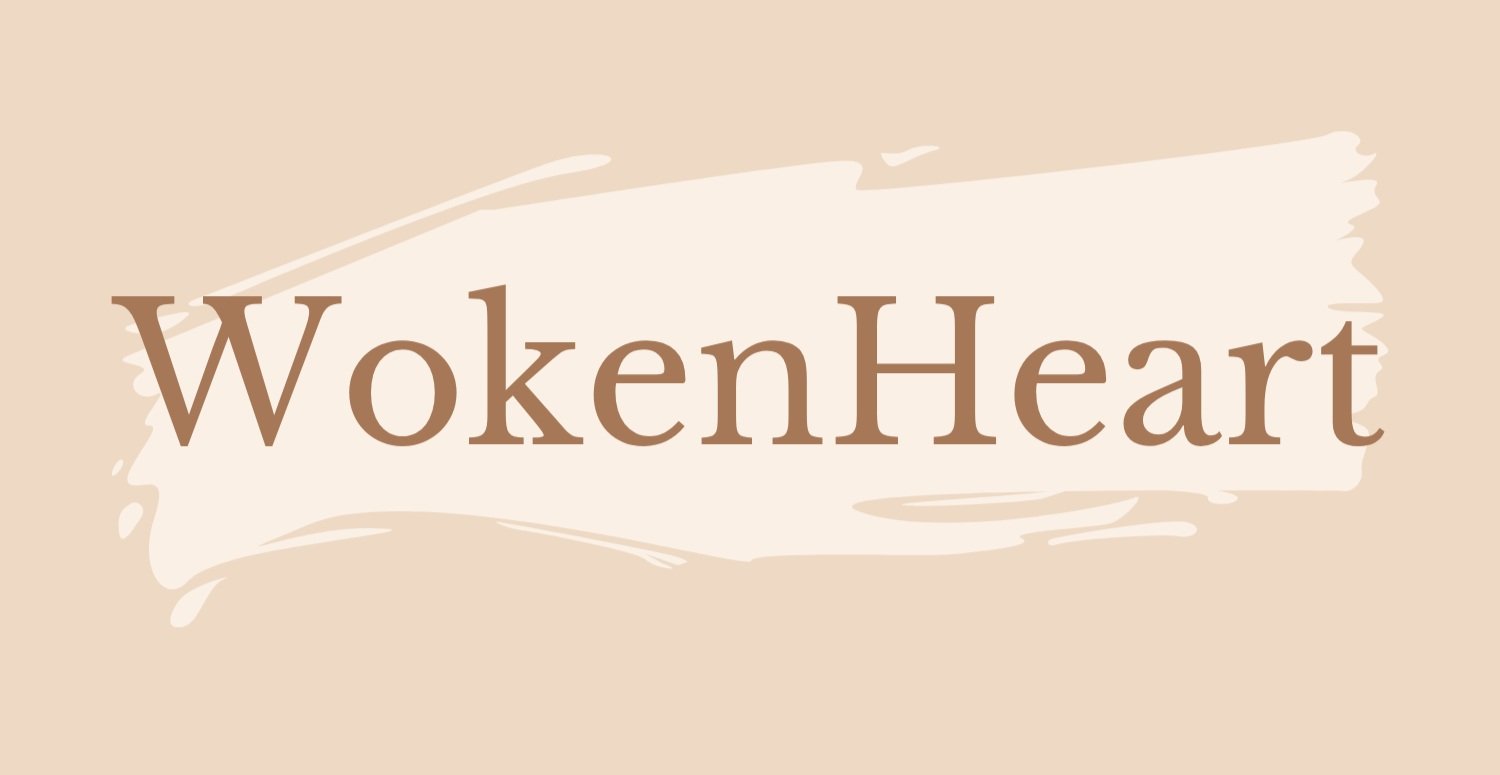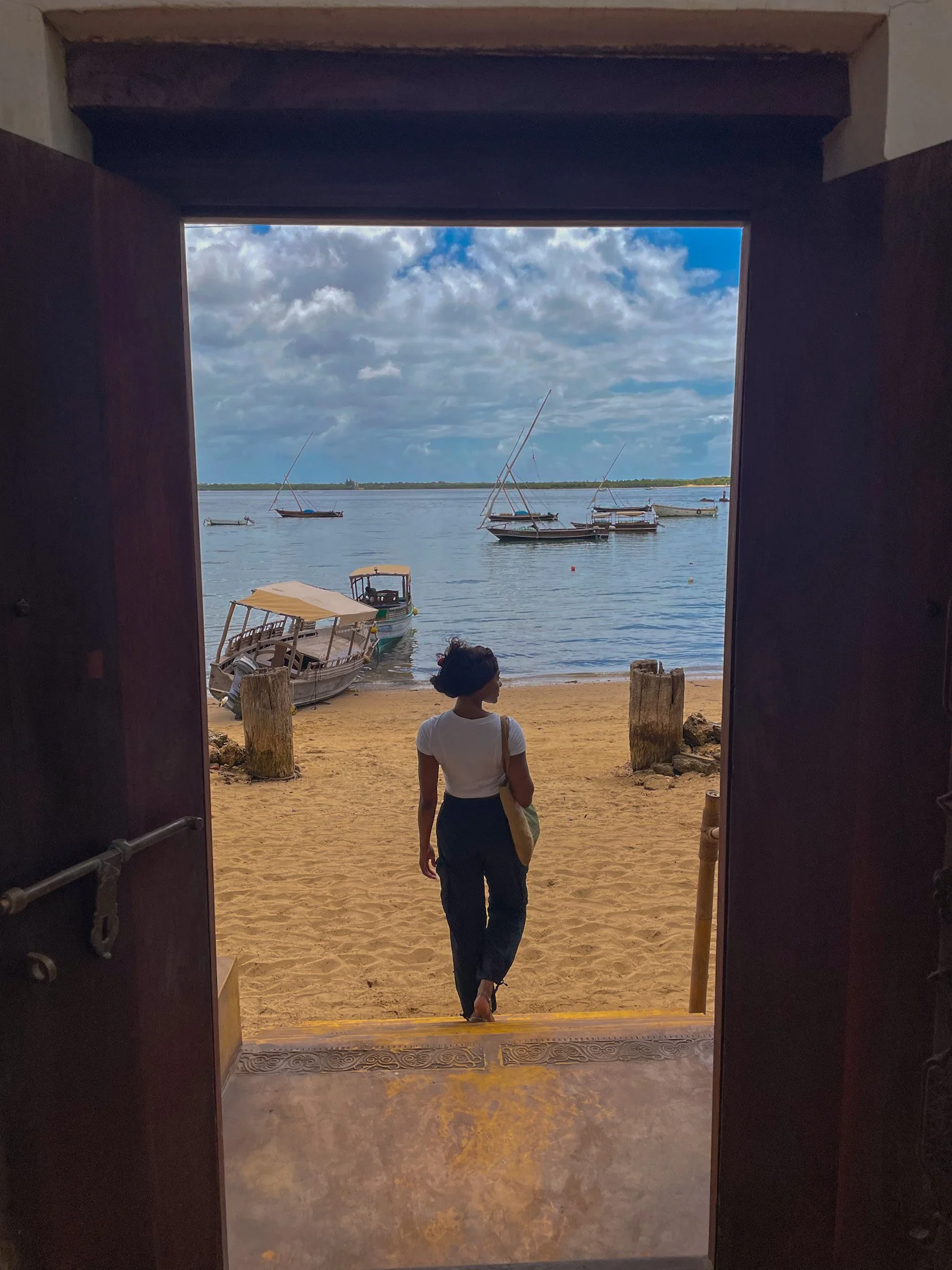Always Left of Center
The In-Between Space is a reflective blog series exploring identity, nuance, and the stories that don’t fit in boxes. Through personal storytelling, it gives voice to the quiet tension of not fully fitting anywhere and the beauty, clarity, and self-discovery that can emerge from that space.
I’ve never been the “cool girl.” I didn’t grow up wearing name-brand clothes or rocking the trendiest hairstyle. The “it” factor? Yeah… that missed me completely. But I wasn’t ordinary either. I was a mashup of contradictions. I was an athlete and a cheerleader, a girly girl who loved anything pink but also didn’t mind getting a little dirty exploring the great outdoors. I was quirky. Dorky. Dare I say the endearingly awkward black girl? You could find me at Charlotte Russe shopping for the cutest maxi dress or at Hot Topic picking out my next pair of Vans and the graphic t-shirt to match. And, my musical taste ranged from Anita Baker to Fall Out Boy. I was a little bit of everything all at once.
I never quite fit into any one box.
Those adolescent years were a conundrum of emotions. I often felt like I was straddling two worlds, never fully belonging to either. I struggled to tell my story—not because it lacked meaning, but because it refused to fit into a simple, binary narrative. It didn’t align with the neat, tidy boxes people love to check. It was nuanced. It was layered. It still is.
Two Worlds, One Identity
I grew up in a small, predominantly white, conservative rural town in Virginia. It wasn’t unusual to find me at a 4-H Club event, milking a cow like the true country girl I am. But in the same breath, I also spent summer breaks vacationing in places like Spain, Canada, and Venezuela, and sometimes hopping from state to state.
Can you imagine the mind-fuck of being a young Black girl traveling the world, then returning home to a place where half the population couldn’t even find the countries I visited on a map?
And that wasn’t even the hardest part.
The hardest part was that my worldview was expanding faster than I could process it. For someone who looked like me, it was rare to see that much of the world so young. And when I shared those experiences, people didn’t just doubt them… they dismissed them.
I still chuckle thinking about the time I told my high school Spanish teacher I’d spent a summer break in Venezuela. Her reaction? Complete disbelief. So much so that during a parent-teacher conference, the first thing out of her mouth was: “Is it true you all went to Venezuela?”
My parents, caught off guard, simply answered, “Yes.” But that wasn’t enough. She asked for proof. So they emailed her photos. Because apparently, we had to validate our passport stamps.
If shock and dismay were a person… it was her.
What I didn’t know then, but understand now, is that when you're Black, especially in spaces that aren't used to your presence, any experience that falls outside of a narrow, preconceived notion will be challenged.
Even the truth.
The Seeds They Planted
Since I can remember, my parents made sure my brother and I saw a world outside of our own, to open our minds to possibility and not fall prey to societal projections or stereotypes, especially as people of color. My family didn’t have wealth by any stretch, but we were rich in curiosity. We didn’t take luxury vacations, we took experiences. Those experiences planted seeds that shaped my values, my dreams, and even the work I do now in international development.
But they also left me feeling… alone and out of place.
Who could I share my experiences with? Who would get it? This isolation, this in-betweenness that was formed, became the undercurrent of my identity. It started early and long before I could fully name what it was.
Too Black. Too White. Never Enough.
I always felt like the in-between girl. Not fully in, not fully out. Close enough to be adjacent, but rarely central. On the fringe is where I lived.
Even though I came from a predominantly white town, my parents surrounded me with Blackness. Black culture. Black history. Black pride. Black tradition. There was no confusion about my racial identity.
But socially? I struggled.
I wasn’t always accepted by the other Black girls. And I never quite felt at ease with my white peers either. Too white for the Black kids. Too Black for the white ones.
So I adjusted. I tweaked myself just enough to be allowed in, but never fully seen.
When You Lose Yourself Trying to Belong
That in-betweenness followed me into adulthood. Into friendships. Relationships. Work. Creative spaces.
I wanted to be cool. To be chosen. To be seen as having it all together. To be accepted. So I leaned hard into the “fake it till you make it” version of myself. Eventually, that mask became a default setting. I was conditioned to seek external validation over inner truth.
It worked… until it didn’t.
At 27, I went through an unraveling, courtesy of a breakup that felt like it came in like a wrecking ball (Alexa, play Wrecking Ball by Miley Cyrus). That heartbreak launched me into some deep soul searching. I couldn’t tell you what I liked, what I cared about, or what I stood for. I had shrunk myself so much to fit into other people’s expectations, I couldn’t find myself anymore.
The Long Way Back to Myself
It took time (and a lotta therapy) to unlearn my people-pleasing tendencies. To stop diluting myself. To stop performing to belong. I cringe thinking about the moments I shrank to be accepted or acted out just to be seen. But there’s something that shifts when you finally step into your truth. You realize it was never about fitting into someone else’s mold or narrative. It was always about honoring your own uniqueness. If I could go back in time, I would give the younger me the warmest hug and tell her that I see her… all of her.
There’s Power in the In-Between
For a long time, I thought that I needed to pick a box. I believed my layers were a sign of confusion, something scattered that needed fixing. But now I see them for what they really are: range. The urge to conform still creeps in from time to time. And beneath that is a belief I carried for too long; that my nuance, my in-betweenness, my “left of center” self wasn’t enough. That I didn’t fit. That I wasn’t whole. Even now, as I continue becoming, that feeling still lingers, but it no longer feels like a burden. It feels like home. My baseline. My origin story.
I’m learning that not fitting in isn’t a flaw. It’s not something to escape or fix. It’s where my voice was formed. Where I learned to listen deeply, to see people fully, to hold space for contradiction.
It’s where my power lives.
For the Girls Who Never Fit In
I’m writing this for anyone who’s ever felt like they didn’t belong. For the ones who weren’t quite “it,” and weren’t quite invisible either. Living life on the fringe.
You don’t have to contort yourself to fit in. You already do.
And that in-between space you’ve been trying to escape? It might just be your superpower.


